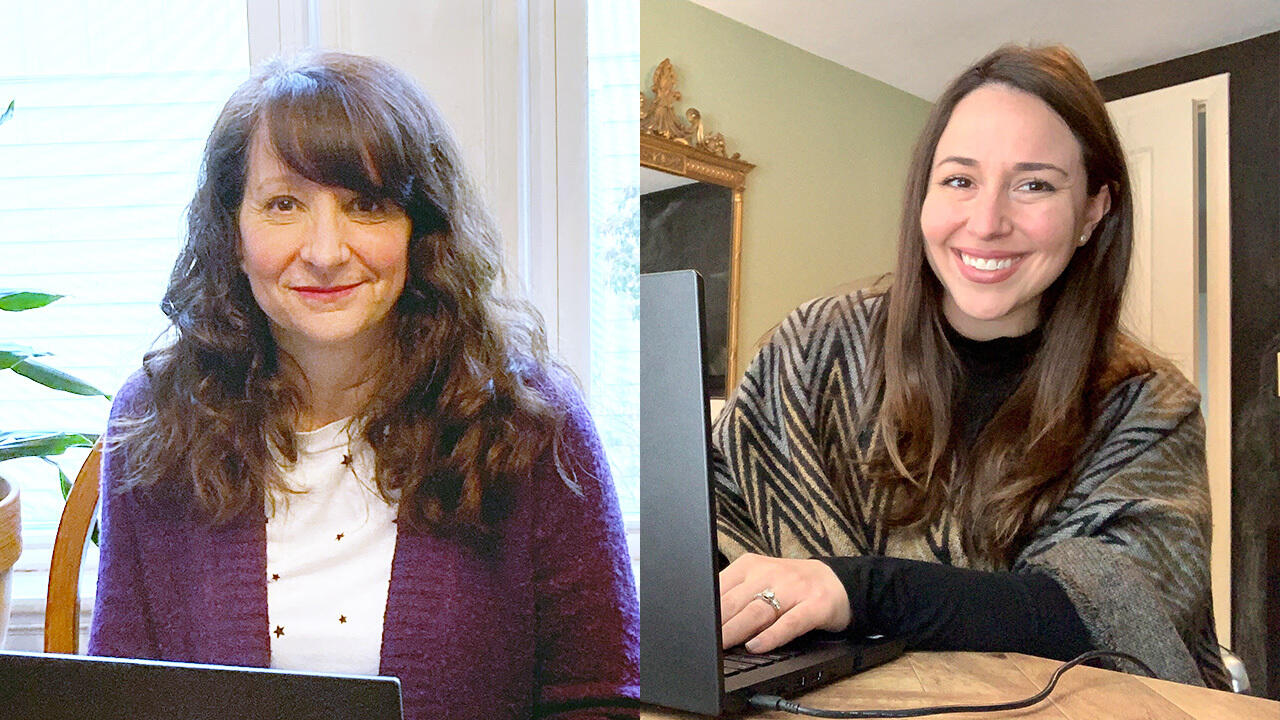
Meet Wellesley’s Contact Tracers, Who Work to Slow the Spread of COVID-19 on Campus
When a positive case of COVID-19 is detected on Wellesley’s campus, the College’s team of contact tracers springs into action. These superheroes at residential colleges and universities are playing an integral role in battling the pandemic.
At this point, with herd immunity a long way off and vaccine rollouts just getting started, “our only weapon against COVID-19 is to slow it down,” said Allison Weinberg, director of student wellness and one of Wellesley’s contact tracers.
The contact tracers are College staff members who agreed to take on the job in addition to their regular duties and completed training through a free online course run by Johns Hopkins University. They identify and reach out to people who may have been exposed to COVID-19, then connect them to resources to help them safely quarantine and reduce their risk of spreading the virus. In addition to a robust asymptomatic testing program, and adhering to general public health guidelines (like wearing masks and practicing physical distancing), contact tracing is a key part of managing the pandemic. The team meets regularly to keep up with updated research on the spread of the virus, best practices, and guidance from the College, state, and federal agencies.
Just hours after a student receives a positive test result, Health Services, provided by Newton-Wellesley Collegiate Health, will call regarding their care. The student will move into isolation housing with the help of Residential Life staff, and then a contact tracer will call from Wellesley’s contact tracing line (781.474.0383—make sure the number is saved in your contacts!).
“We know that getting a call related to COVID-19 can be scary and overwhelming, but we have been continuously impressed by community members, as they pick up the phone right away and are cooperative and helpful as we go through our necessary questions.”
Allison Weinberg, director of student wellness
“We call the person who has tested positive and work with them to identify any close contacts who may need to quarantine,” explained Beth Uhl-Israel, the College’s risk manager. Currently, the CDC defines a close contact as anyone who was within six feet of an infected person for at least 15 cumulative minutes, going back to two days before the person showed signs of illness or had a positive test—regardless of whether they wore a mask. “We repeat this process with close contacts to identify their own contacts, which we call secondary contacts,” added Weinberg.
The contact tracers follow a script of questions to help the individual remember what they've done, where they’ve been, and who they’ve been with.
“We know that getting a call related to COVID-19 can be scary and overwhelming,” said Weinberg. “But we have been continuously impressed by community members, as they pick up the phone right away and are cooperative and helpful as we go through our necessary questions. The information they share helps to reduce spread of the virus by quarantining or restricting other people who may have been exposed.” Information is maintained in as confidential a manner as possible, shared only as needed to manage the case and with state and local public health authorities as may be required. Students’ honesty and thorough answers are crucial in preventing an outbreak.
Once close and secondary contacts are identified, the contact tracers work with Health Services and Residential Life to help place close contacts in quarantine. Secondary student contacts must remain in their rooms for a period of time—called in-room restriction—leaving only to pick up meals from the dining hall and attend their testing appointments.
At Wellesley, students, faculty, and staff have to pre-register for events, swipe into buildings, and fill out a daily symptom tracker —all steps that aid in efficient contact tracing. Weinberg said the College’s block system, which requires students to live and eat with a specific set of classmates, is particularly helpful because it “limits some of the most precarious times of respiratory droplet/aerosol exposure (sharing bathrooms, eating with masks off, etc.) to a smaller group, which means we can once again easily identify and contact folks.”
One trend the contact tracers have seen is that individuals often think their bubble is smaller than it really is. “The best way to limit your bubble—and reduce your odds of getting infected or having to quarantine—is to always maintain at least six feet of distance between you and anyone else,” Uhl-Israel said.
When faculty and staff test positive, the protocol is slightly different, but contact tracing is still necessary. For faculty and staff, a nurse from Occupational and Environmental Health Network (OEHN), contracted by Wellesley, coordinates care and the period of off-campus isolation, as Health Services only provides health care for students. Contact tracers call employees who test positive to identify any close contacts within the on-campus community who should be quarantined off-campus, and then they follow up with those close contacts to determine whether any secondary contacts require restrictions from campus.
Though the College has developed many systemic measures and protocols to help keep the community healthy, individuals must do their part as well, said Uhl-Israel and Weinberg. “There are individual behaviors that absolutely help the contact tracing process, such as keeping in mind who you spend time with, where, and how, and following COVID-19 safety guidelines like always wearing a mask and staying physically distant,” said Uhl-Israel.
“We take great pride in supporting our community and keeping one another safe,” said Weinberg. “But the job isn’t just [ours]. It’s up to every community member to keep each other healthy—this is truly something we must all do together.”

